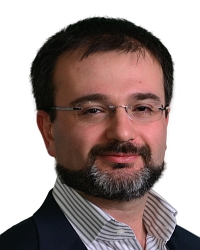TR2019-114
Introduction to Patent Drafting to Both Protect and Promote Scientific Research
-
- , "Introduction to Patent Drafting to Both Protect and Promote Scientific Research", Innovate Magazine: American Intellectual Property Law Association (AIPLA), October 2019.BibTeX TR2019-114 PDF
- @article{Vinokur2019oct,
- author = {Vinokur, Gennadiy V.},
- title = {{Introduction to Patent Drafting to Both Protect and Promote Scientific Research}},
- journal = {Innovate Magazine: American Intellectual Property Law Association (AIPLA)},
- year = 2019,
- month = oct,
- url = {https://www.merl.com/publications/TR2019-114}
- }
- , "Introduction to Patent Drafting to Both Protect and Promote Scientific Research", Innovate Magazine: American Intellectual Property Law Association (AIPLA), October 2019.
-
MERL Contact:
-
Research Area:
Headquarters
Abstract:
A patent’s value depends on its ability to help patent holders achieve their business objectives. Different companies may have different objectives for their patents, such as providing market advantage for selling products or gaining revenue through patent infringement and licensing programs. Hence, the same patent may have different value for different companies based on the alignment of the patent with a particular company’s objectives. Various research organizations, such as scientific labs of universities and corporate research and development (CR&D) divisions, have another, distinct business objective – scientific labs strive when businesses are adopting the results of their research in their products and services. Hence, one business objective of a research laboratory is to promote their inventions to its parent organization, and patents, which are typically viewed as means for achieving the legal objective of protecting scientific research, also have another marketing objective to the research laboratory of promoting the scientific research. In this document, we introduce some principles of drafting a patent application to achieve synergy in both protecting and promoting scientific research.
